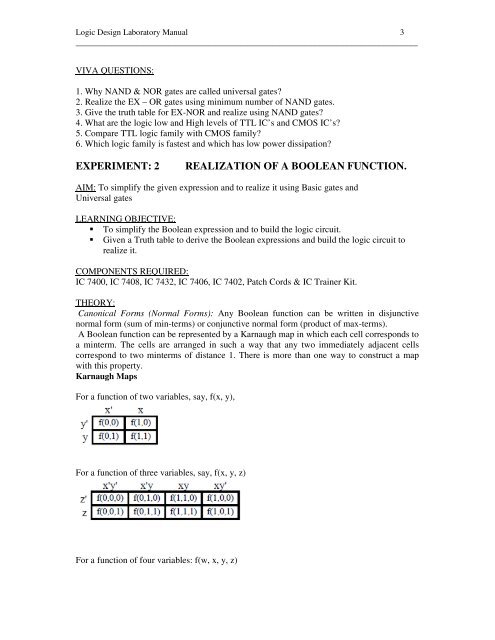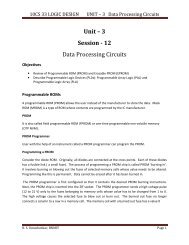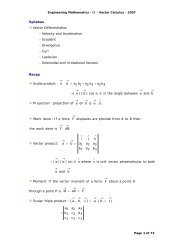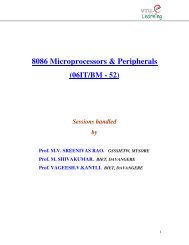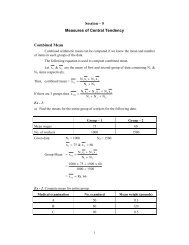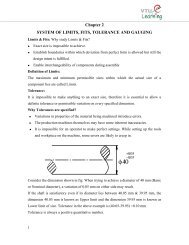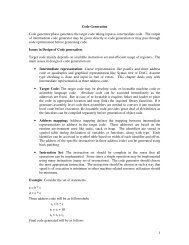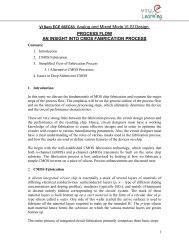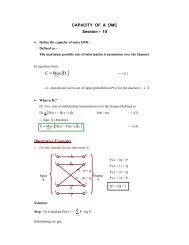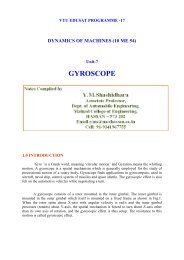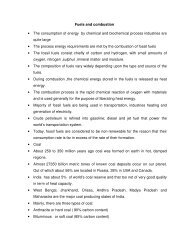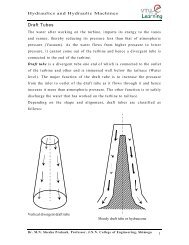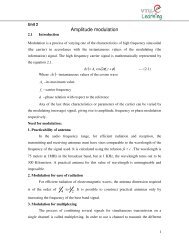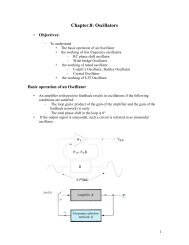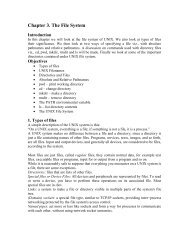LOGIC DESIGN LABORATORY MANUAL - VTU e-Learning Centre
LOGIC DESIGN LABORATORY MANUAL - VTU e-Learning Centre
LOGIC DESIGN LABORATORY MANUAL - VTU e-Learning Centre
You also want an ePaper? Increase the reach of your titles
YUMPU automatically turns print PDFs into web optimized ePapers that Google loves.
Logic Design Laboratory Manual 3<br />
___________________________________________________________________________<br />
VIVA QUESTIONS:<br />
1. Why NAND & NOR gates are called universal gates?<br />
2. Realize the EX – OR gates using minimum number of NAND gates.<br />
3. Give the truth table for EX-NOR and realize using NAND gates?<br />
4. What are the logic low and High levels of TTL IC’s and CMOS IC’s?<br />
5. Compare TTL logic family with CMOS family?<br />
6. Which logic family is fastest and which has low power dissipation?<br />
EXPERIMENT: 2<br />
REALIZATION OF A BOOLEAN FUNCTION.<br />
AIM: To simplify the given expression and to realize it using Basic gates and<br />
Universal gates<br />
LEARNING OBJECTIVE:<br />
To simplify the Boolean expression and to build the logic circuit.<br />
Given a Truth table to derive the Boolean expressions and build the logic circuit to<br />
realize it.<br />
COMPONENTS REQUIRED:<br />
IC 7400, IC 7408, IC 7432, IC 7406, IC 7402, Patch Cords & IC Trainer Kit.<br />
THEORY:<br />
Canonical Forms (Normal Forms): Any Boolean function can be written in disjunctive<br />
normal form (sum of min-terms) or conjunctive normal form (product of max-terms).<br />
A Boolean function can be represented by a Karnaugh map in which each cell corresponds to<br />
a minterm. The cells are arranged in such a way that any two immediately adjacent cells<br />
correspond to two minterms of distance 1. There is more than one way to construct a map<br />
with this property.<br />
Karnaugh Maps<br />
For a function of two variables, say, f(x, y),<br />
For a function of three variables, say, f(x, y, z)<br />
For a function of four variables: f(w, x, y, z)


